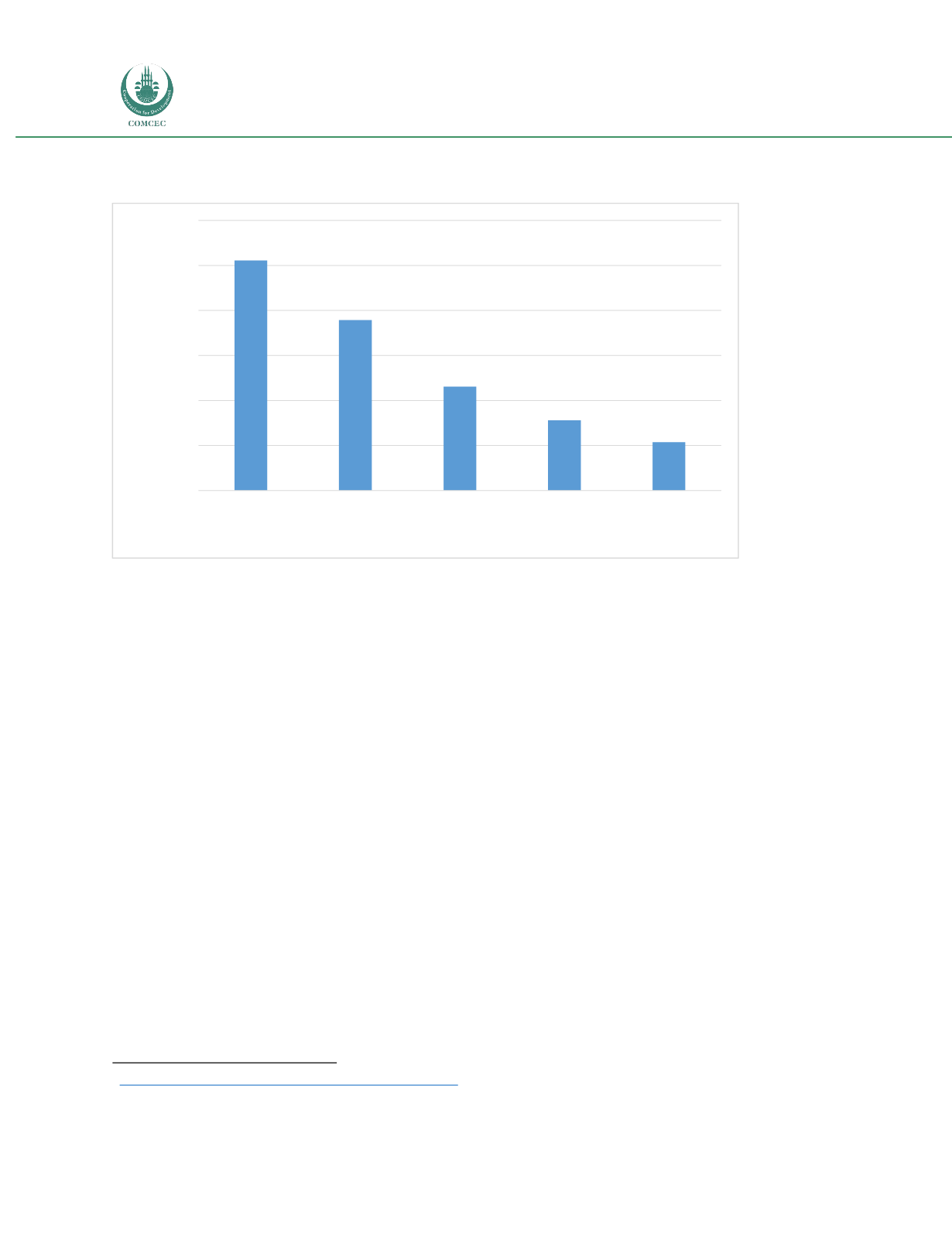

Strengthening the Compliance of the OIC Member States
to International Standards
74
Figure 36: Top five export markets for Bangladesh, 2011.
Source: WITS-Comtrade.
The garment and textile sector in Bangladesh—where standards issues loom large—accounts for $19
billion in annual exports, which equates to 80% of total export earnings and 20% of the country’s GDP.
The industry employs 4.2 million workers—mostly women—in formal private sector jobs in more than
4,500 factories (IFC, 2014). The Bangladesh readymade garment (RMG) sector accounts for 5% of the
world RMG export market, with leading global garment buyers increasingly relying on Bangladesh to
meet their needs, especially at the lower end of the value chain.
In its most recent Trade Policy Review for Bangladesh, the report by the WTO Secretariat (2012)
attributes the RMG sector’s standing largely to its price competitiveness (especially for low value RMG
products), the duty-free quota-free access that RMG products enjoy in Bangladesh’s major markets (EU,
Japan, Australia) owing to the country’s LDC status, and the government’s export promotion measures.
That said, according to the Bangladesh Textile Mills Association (BTMA)
4
, “out of 3500 RMG factories
over 2000 are already complying with the international standard. Many of these factories have obtained
international standard certificates like ISO-series, GFSI and FSSC. On the basis of these certificates
Bangladesh RMG factories are now on top in the list of buyers.” McKinsey and Company (2011) A 2011
report by McKinsey and Company also mentions that the Bangladesh RMG sector “provides satisfactory
quality levels, especially in value and entry-level mid-market products”.
4 http://www.bangla-expo.com/DTG/newsDetail.asp?serno=5060
1000
2000
3000
4000
5000
6000
United States
Germany United Kingdom France
Spain
Million USD
Market
















